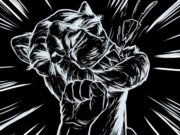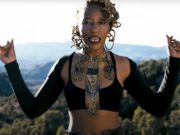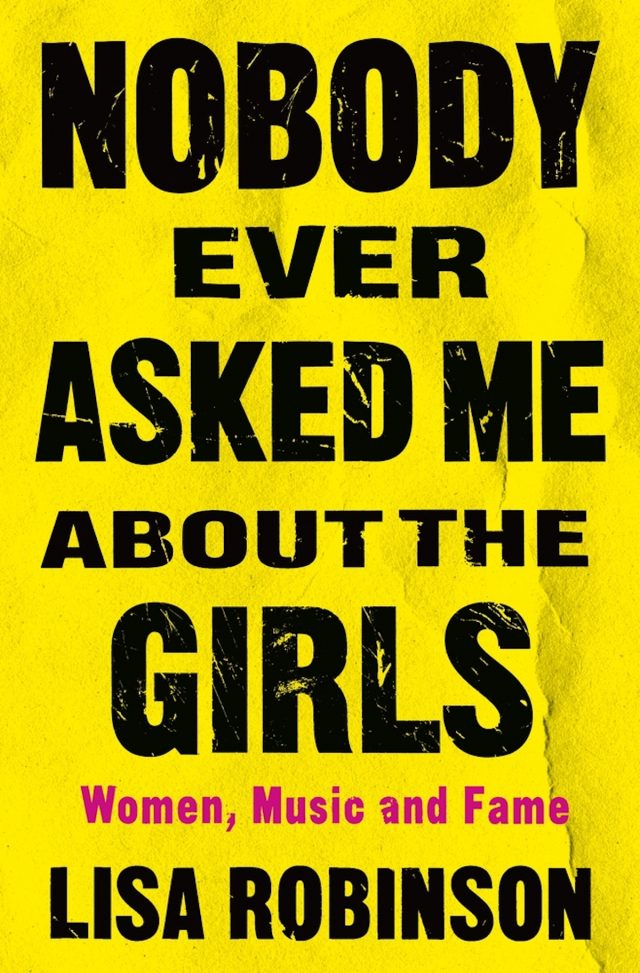Most weeks, the roster of rock reading matter is a man’s world. This week, I am pleased to report the playing field is slightly more level, thanks to some prominent new titles by or about Joni Mitchell, Patti Smith, Lisa Robinson and others. Read all about ’em:
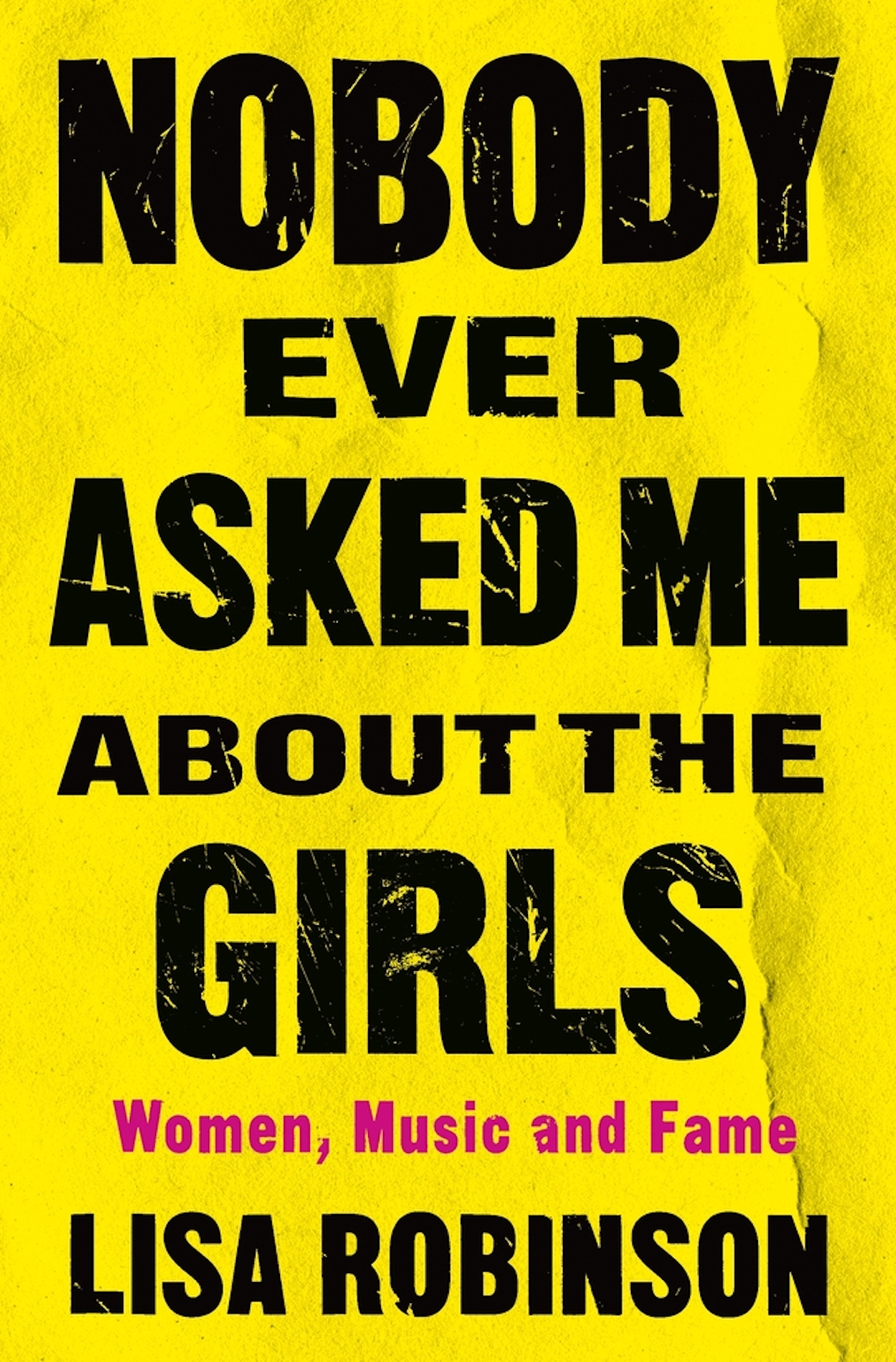 Nobody Ever Asked Me About The Girls: Women, Music and Fame
Nobody Ever Asked Me About The Girls: Women, Music and Fame
By Lisa Robinson
THE EDITED PRESS RELEASE: “Over four decades, Lisa Robinson has made a name for herself as a celebrated journalist in a business long known for its boys’ club mentality. But to Robinson, the female performers who sat down with her, most often at the peak of their careers, were the true revelations. Based on conversations with more than 40 female artists, Nobody Ever Asked Me About The Girls is a behind-the-scenes glimpse into the effects of success on some of music’s most famous women. From Tina Turner, Joni Mitchell, Stevie Nicks, Donna Summer, Bette Midler, Alanis Morissette and Linda Ronstadt to Mary J. Blige, Lady Gaga, Jennifer Lopez, Adele, Beyoncé, Rihanna and numerous others, Robinson reveals the private obsessions and public distractions that musicians contend with in their pursuit of stardom. From these interviews emerge candid portraits of how these women ― regardless of genre or decade ― deal with image, abuse, love, motherhood, family, sex, drugs, business, and age. Complete with reflections from Robinson’s own career as a pioneering female music writer, Nobody Ever Asked Me About The Girls offers an overdue consideration of how hopes, dreams, and the drive for recognition have propelled our most beloved female musicians to take the stage and leave an undeniable, lasting musical mark on the world.”
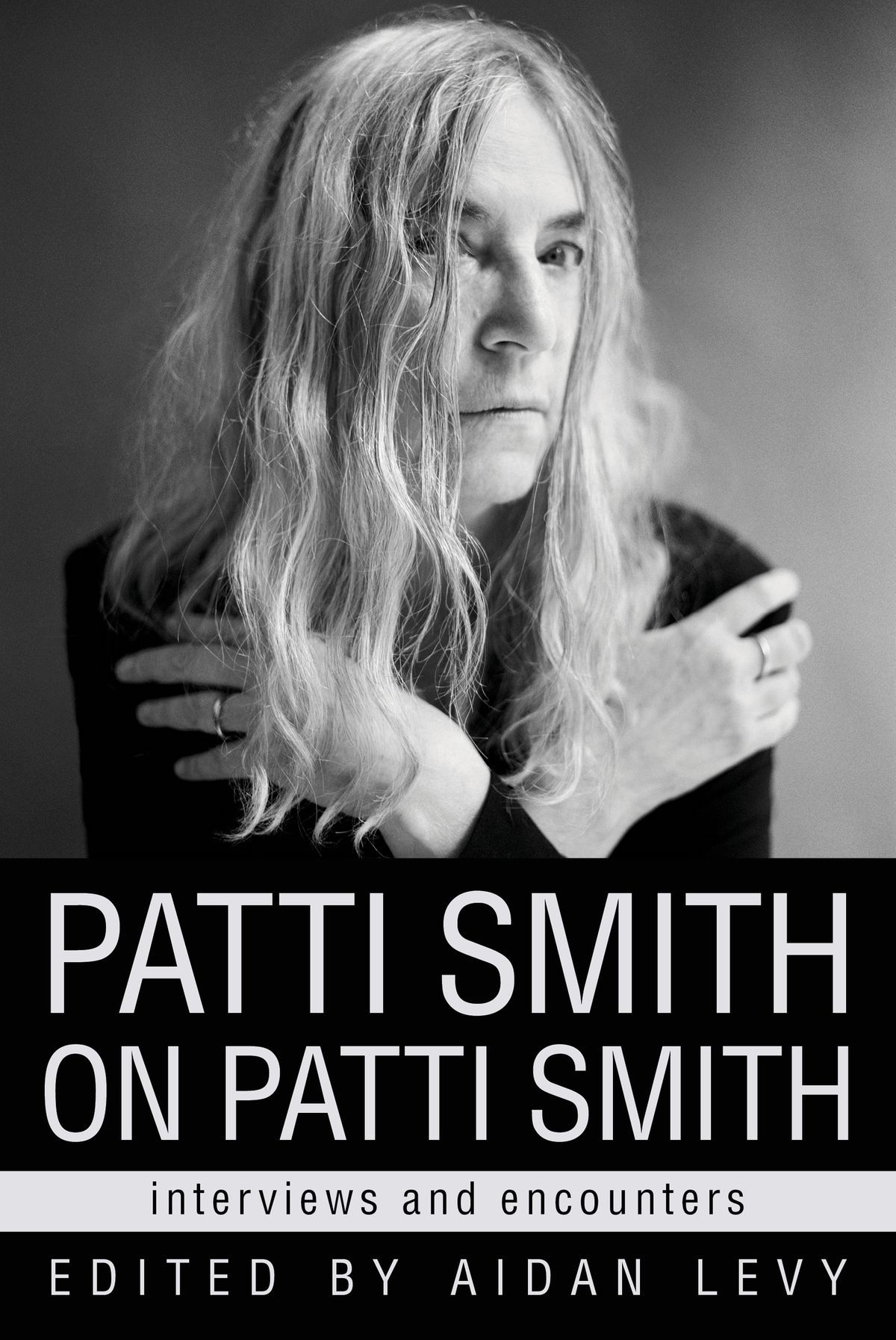 Patti Smith on Patti Smith: Interviews and Encounters
Patti Smith on Patti Smith: Interviews and Encounters
By Aidan Levy
THE EDITED PRESS RELEASE: “From the moment Patti Smith burst onto the scene, chanting ‘Jesus died for somebody’s sins, but not mine,’ the irreverent opening line to Horses, her 1975 debut album, the punk movement had found its dissident intellectual voice. Yet outside the recording studio — Smith has released 11 studio albums — the punk poet laureate has been perhaps just as revelatory and rhapsodic in interviews, delivering off-the-cuff jeremiads that emboldened a generation of disaffected youth and imparting hard-earned life lessons. With her characteristic blend of bohemian intellectualism, antiauthoritarian poetry, and unflagging optimism, Smith gave them hope in the transcendent power of art. Her interview archive serves as a compelling counternarrative to the albums and books. Initially, interviewing Patti Smith was a censorship liability. Contemptuous of staid rules of decorum, no one knew what she might say, whether they were getting the romantic, swooning for Lorca and Blake, or the firebrand with no respect for an on-air seven-second delay. Patti Smith on Patti Smith is a compendium of profound and reflective moments in the life of one of the most insightful and provocative artists working today.”
 Joni Mitchell: Backstage Pass
Joni Mitchell: Backstage Pass
By Michael A O’Neill
THE EDITED PRESS RELEASE: “One of the most important female recording artist of the last 50 years, Joni Mitchell began singing in small nightclubs in her hometown of Saskatoon and throughout western Canada, before busking in the streets and nightclubs of Toronto. In 1965, she moved to the United States and began touring. Settling in Southern California, Mitchell, with popular songs like Big Yellow Taxi and Woodstock, helped define an era and a generation. Mitchell’s fifth album, For the Roses, was released in 1972. She then switched labels and began exploring more jazz-influenced melodic ideas, by way of lush pop textures, on 1974’s Court and Spark, which featured the radio hits Help Me and Free Man in Paris and became her best-selling album. Mitchell is the sole producer credited on most of her albums, including all her work in the 1970s. A blunt critic of the music industry, she quit touring and released her 17th, and reportedly last, album of original songs in 2007. With roots in visual art, Mitchell has designed most of her own album covers. She describes herself as a “painter derailed by circumstance.”
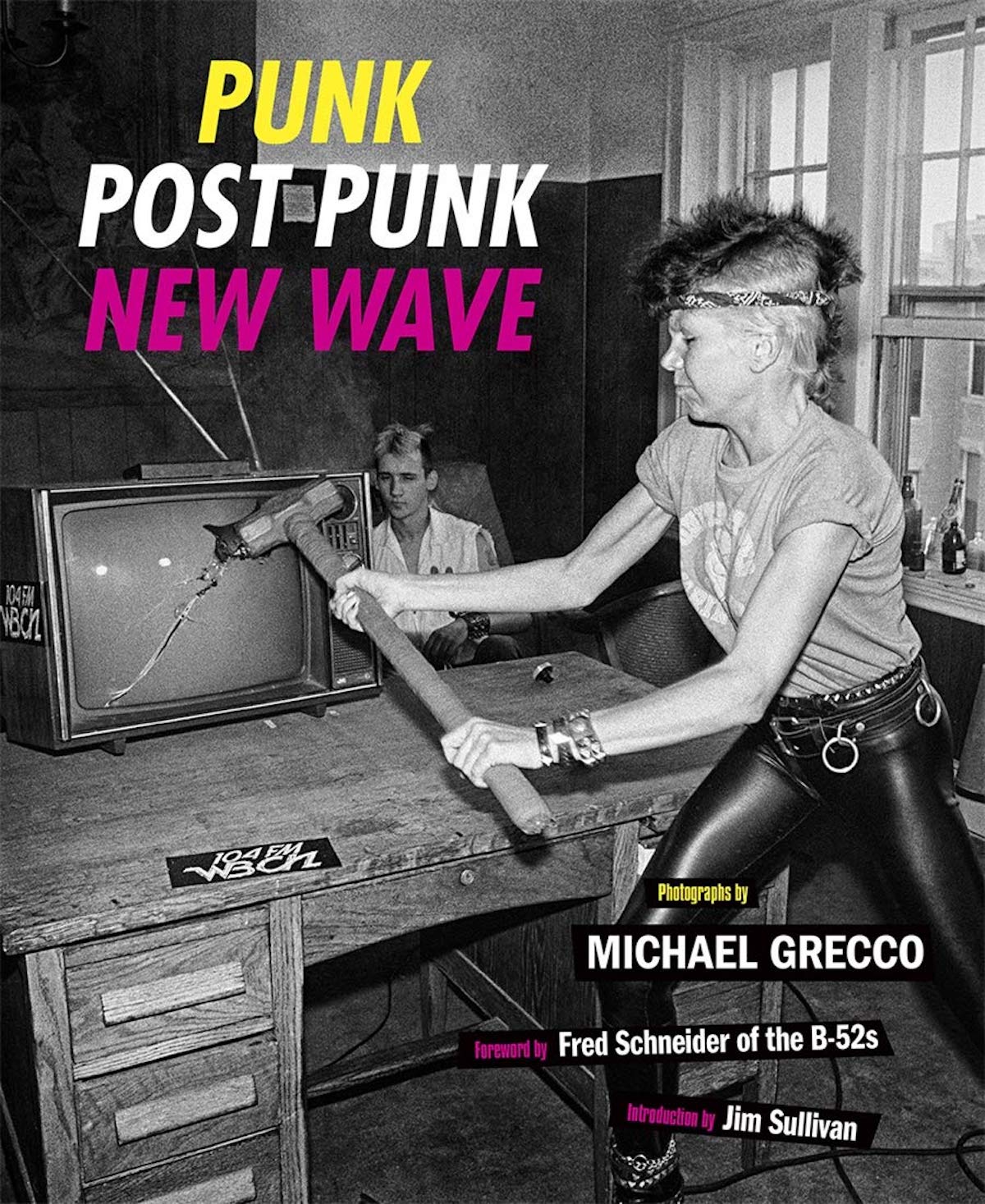 Punk, Post Punk, New Wave: Onstage, Backstage, In Your Face, 1978-1991
Punk, Post Punk, New Wave: Onstage, Backstage, In Your Face, 1978-1991
By Michael Grecco
THE EDITED PRESS RELEASE: “In the late ’70s, punk began to evolve into the post-punk and new wave movements that dominated until the early ’90s. During this time, prolific photographer and filmmaker Michael Grecco was in the thick of things, documenting the club scene in places like Boston and New York, and getting shots on- and backstage with bands such as The Cramps, Dead Kennedys, Talking Heads, Human Sexual Response, Elvis Costello, Joan Jett, The Ramones, and many others. Grecco captured in black and white and color the raw energy, sweat, and antics that characterized the alternative music of the time. Punk, Post Punk, New Wave: Onstage, Backstage, In Your Face, 1978–1991 features stunning, never-before-seen photography from this iconic period in music. In addition to concert photography, he also shot album covers and promotional pieces that round out this impressively extensive photo collection. Featuring a foreword from Fred Schneider of The B-52’s, Punk, Post Punk, New Wave… is a quintessential piece of music history for anyone looking for backstage access into the careers of punk and post punk’s most beloved bands.”
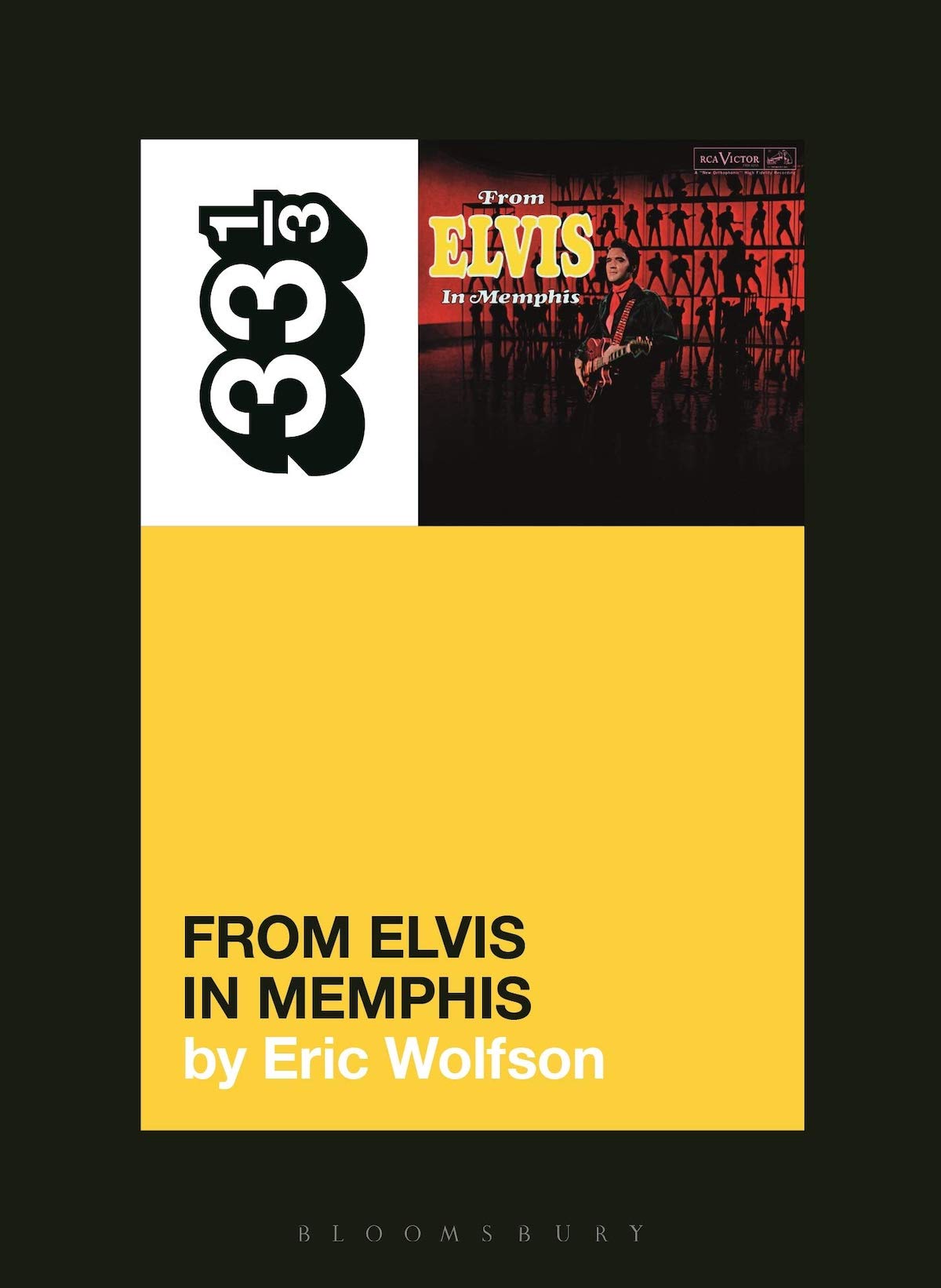 33 1/3 | Elvis Presley’s From Elvis in Memphis
33 1/3 | Elvis Presley’s From Elvis in Memphis
By Eric Wolfson
THE EDITED PRESS RELEASE: “I had to leave town for a little while…” with these words, Elvis Presley truly came home to rock ’n’ roll. A little over a month earlier he had staged rock’s first and greatest comeback in a television program, forever known as The ’68 Comeback Special. With this show, he resurrected himself — at the age of 33, no less — from the ashes of a career mired in bad movies and soundtracks. So where to go from here? Like a killer returning to the scene of the crime, Elvis came back home to Memphis, where it had all begun. Eschewing the fancier studios of Nashville and Hollywood, he set up shop at the ramshackle American Sound Studio, run by a maverick named Chips Moman with an in-house backing band now known as The Memphis Boys, and made the music of his life. The resulting work, From Elvis in Memphis, would be the finest studio album of his career, an explosion of mature confidence and fiery inspiration. It was the sound of Elvis establishing himself as a true rock ’n’ roll artist — and proving his status as a legend.”
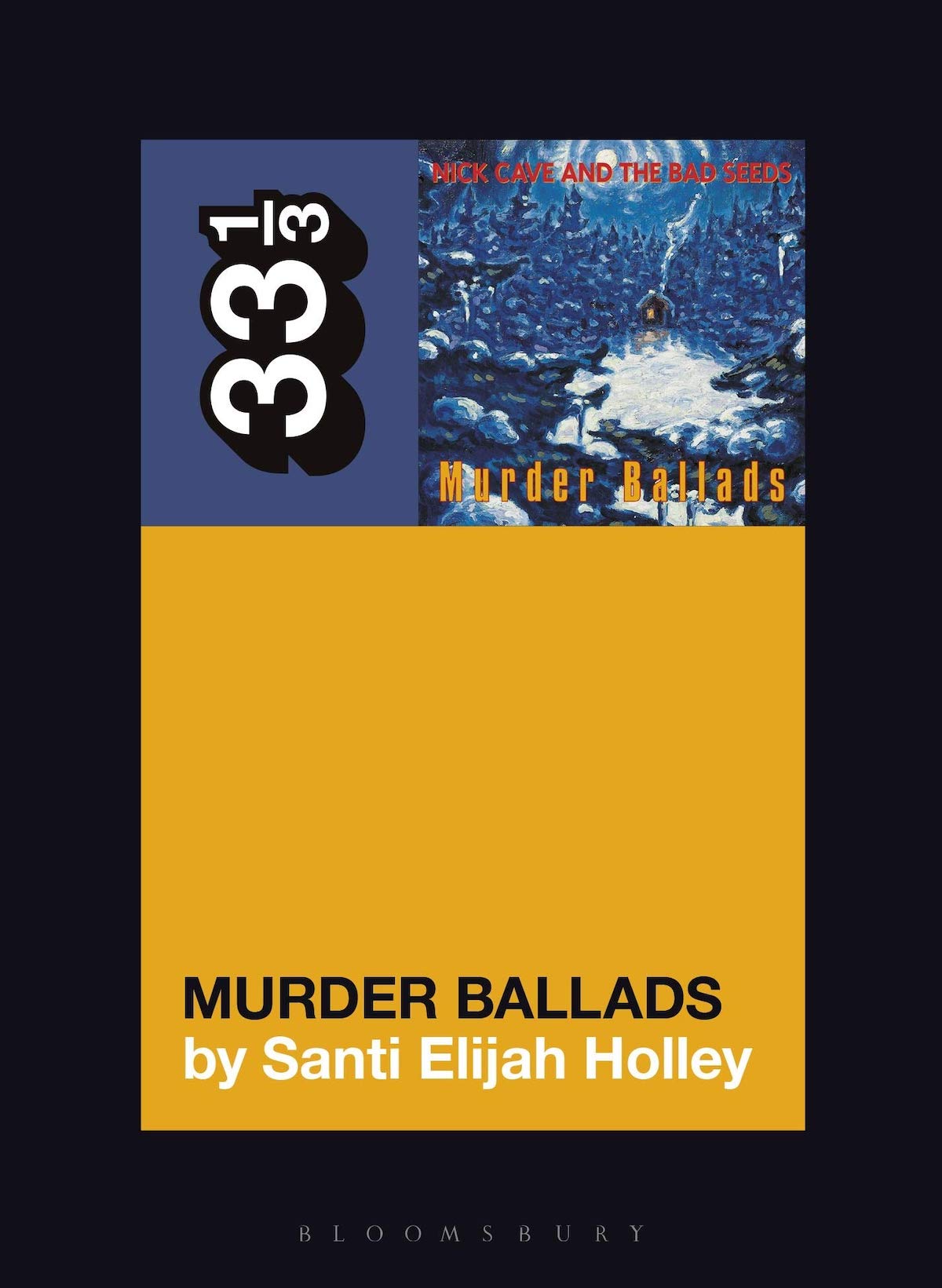 33 1/3 | Nick Cave and the Bad Seeds’ Murder Ballads
33 1/3 | Nick Cave and the Bad Seeds’ Murder Ballads
By Santi Elijah Holley
THE EDITED PRESS RELEASE: “In a bar called The Bucket of Blood, a man shoots the bartender four times in the head. In the small town of Millhaven, a teenage girl secretly and gleefully murders her neighbors. A serial killer travels from home to home, quoting John Milton in his victims’ blood. Murder Ballads, the ninth studio album from Nick Cave and the Bad Seeds, is a gruesome, blood-splattered reimagining of English ballads, American folk and blues music, and classic literature. Most of the stories told on Murder Ballads have been interpreted many times, but never before had they been so graphic or profane. Though earning the band their first Parental Advisory warning label, Murder Ballads, released in 1996, brought Nick Cave and the Bad Seeds their biggest critical and commercial success, thanks in part to the award-winning single, Where the Wild Roses Grow, an unlikely duet with Australian pop singer Kylie Minogue. Closely examining each of the 10 songs on the album, Santi Elijah Holley investigates the stories behind the songs, and the numerous ways these ballads have been interpreted through the years. Murder Ballads is a tour through the evolution of folk music, and a journey into the dark secrets of American history.”
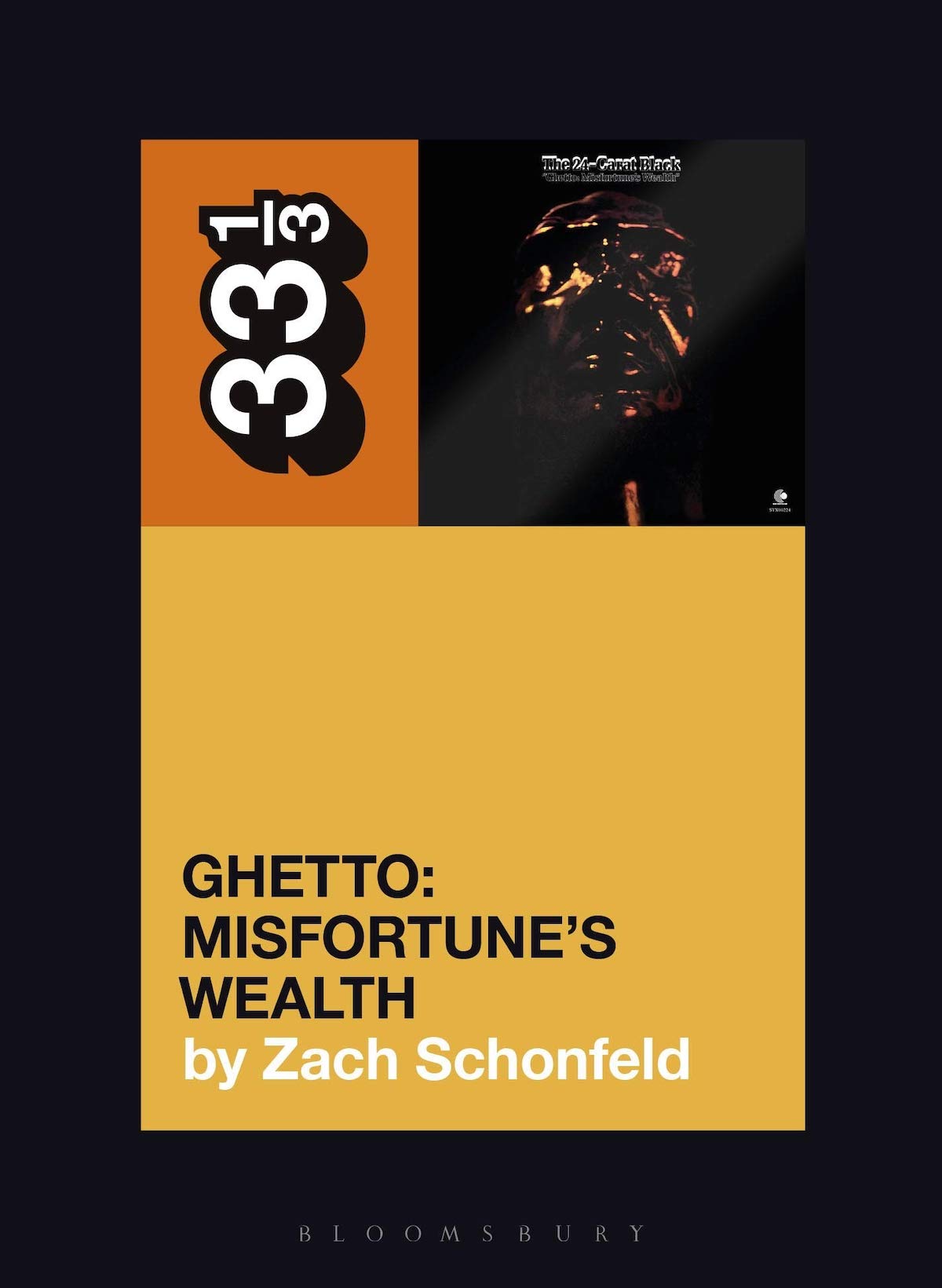 33 1/3 | 24-Carat Black’s Ghetto: Misfortune’s Wealth
33 1/3 | 24-Carat Black’s Ghetto: Misfortune’s Wealth
By Zach Schonfeld
THE EDITED PRESS RELEASE: “In 1973, the musical collective 24-Carat Black released an unheralded masterpiece on Stax Records — and then disappeared. Ghetto: Misfortune’s Wealth, a soul-funk concept album primarily written by the ex-Motown arranger Dale Warren, was too bleak, ambitious, or just outright bizarre to reach mainstream audiences. 24-Carat Black collapsed when Stax went bankrupt, and the group’s only completed album sank into cultural obscurity. With deep reporting elucidating an untold story full of cinematic details, this book traces how Ghetto went from commercial flop to enigmatic underground classic embraced by the hip-hop community. It also chronicles, in infuriating detail, how the music industry of the 1970s systematically exploited soul musicians and then left them struggling to get paid-and where 24-Carat Black fits into this broader injustice. This is a fascinating and multilayered story about a remarkable album nearly lost to history. It’s also a rare glimpse into what it’s like to have your music resurrected by rap samples decades after your career fell apart.”
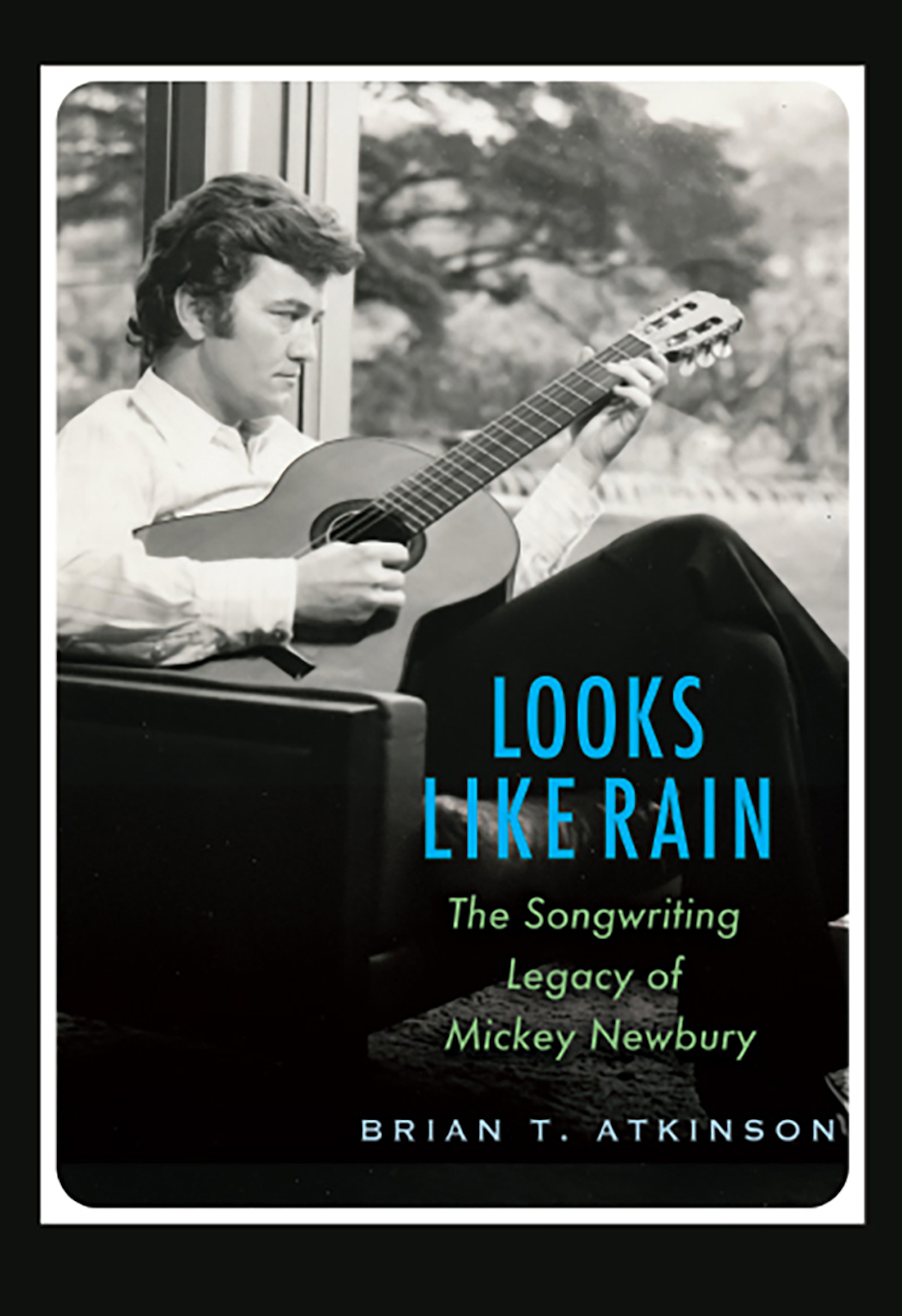 Looks Like Rain: The Songwriting Legacy of Mickey Newbury
Looks Like Rain: The Songwriting Legacy of Mickey Newbury
By Brian T Atkinson
THE EDITED PRESS RELEASE: “Mickey Newbury (1940-2002) grew up in Houston and moved to Nashville in the early 1960s, following his muse. He wrote top hits for many well-known artists, including Don Gibson, Andy Williams, Kenny Rogers, Tom Jones and others. He is probably best known, however, for being name-checked in the song Luckenbach, Texas (Back to the Basics of Love) by Waylon Jennings. Newbury has been cited by Jennings, Kris Kristofferson, Townes Van Zandt, and many other eminent singer-songwriters as a primary influence. In his own independent fashion, Newbury helped to loosen the grip maintained for decades by the Nashville studio system, thus paving the way for later innovators like Willie Nelson, David Allan Coe, and others. He is still the only songwriter to produce hits on four different charts in the same year in 1968: Just Dropped In (to See What Condition My Condition was In) on the pop/rock charts, Sweet Memories on easy listening, Time Is a Thief on the R&B charts, and Here Comes the Rain, Baby in country. Following the successful pattern established in his previous works on Townes Van Zandt and Ray Wylie Hubbard, veteran music journalist Brian T. Atkinson has interviewed artists such as Kris Kristofferson, Bobby Bare, Ramblin’ Jack Elliott, Steve Earle, Rodney Crowell and many others to learn how Newbury’s influence continues to shape the musical and artistic approach of both seasoned and newer performers. Forewords by Larry Gatlin and Don McLean set the stage for a fascinating look back at one of the most revered songwriters and musicians of recent decades.”
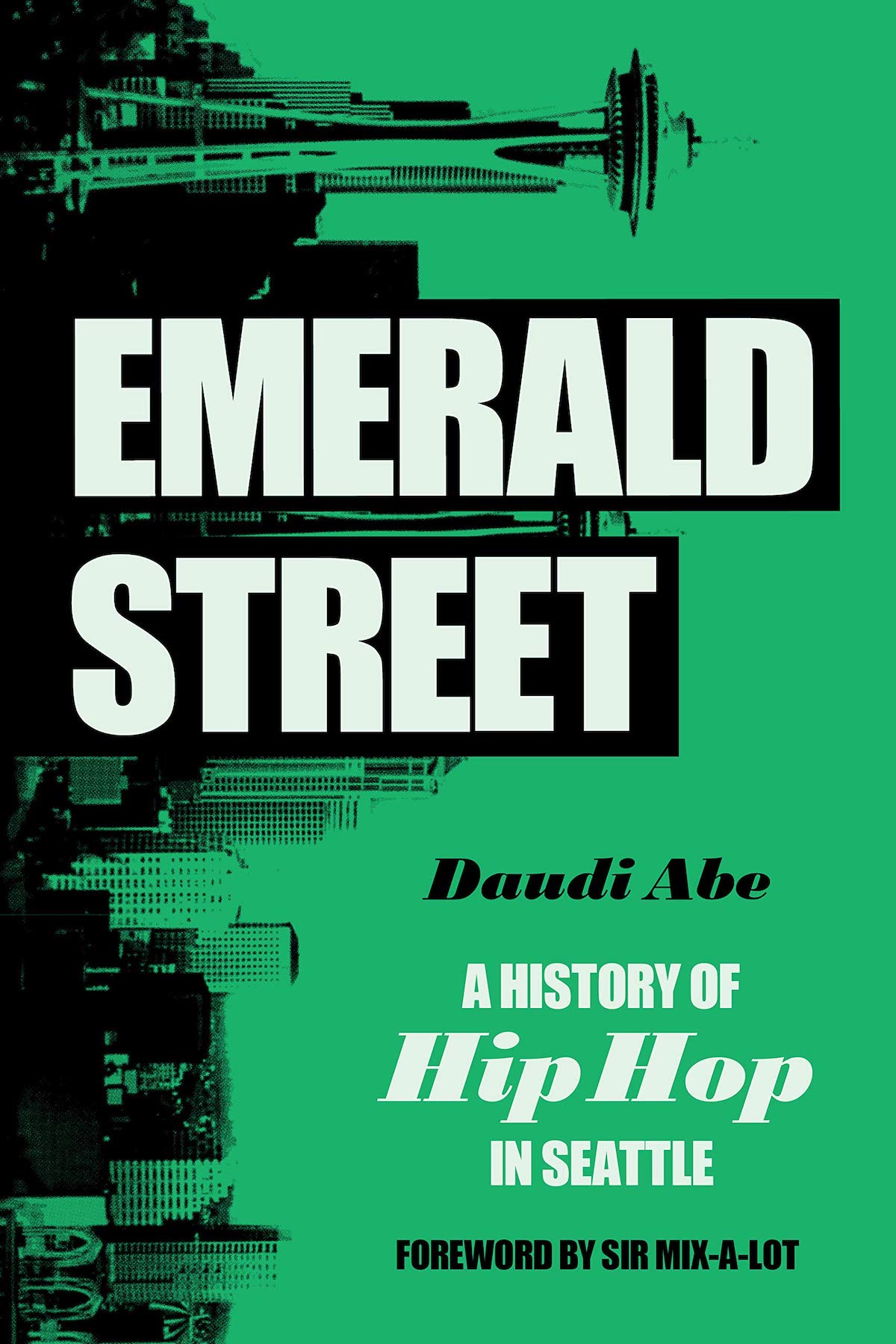 Emerald Street: A History of Hip Hop in Seattle
Emerald Street: A History of Hip Hop in Seattle
By Daudi Abe
THE EDITED PRESS RELEASE: “From the first rap battles in Seattle’s Central District to the Grammy stage, hip-hop has shaped urban life and the music scene of the Pacific Northwest for more than four decades. In the early 1980s, Seattle’s hip-hop artists developed a community-based culture of stylistic experimentation and multiethnic collaboration. Emerging at a distance from the hip-hop centers of New York City and Los Angeles, Seattle’s most famous hip-hop figures, Sir Mix-A-Lot and Macklemore, found mainstream success 20 years apart by going directly against the grain of their respective eras. In addition, Seattle has produced a two-time world-champion breaking crew, globally renowned urban clothing designers, an international hip-hop magazine, and influential record producers. In Emerald Street, Daudi Abe chronicles the development of Seattle hip-hop from its earliest days, drawing on interviews with artists and journalists to trace how the elements of hip-hop — rapping, DJing, breaking, and graffiti — flourished in the Seattle scene. He shows how Seattle hip-hop culture goes beyond art and music, influencing politics, the relationships between communities of color and law enforcement, the changing media scene, and youth outreach and educational programs. The result is a rich narrative of a dynamic and influential force in Seattle music history and beyond.”
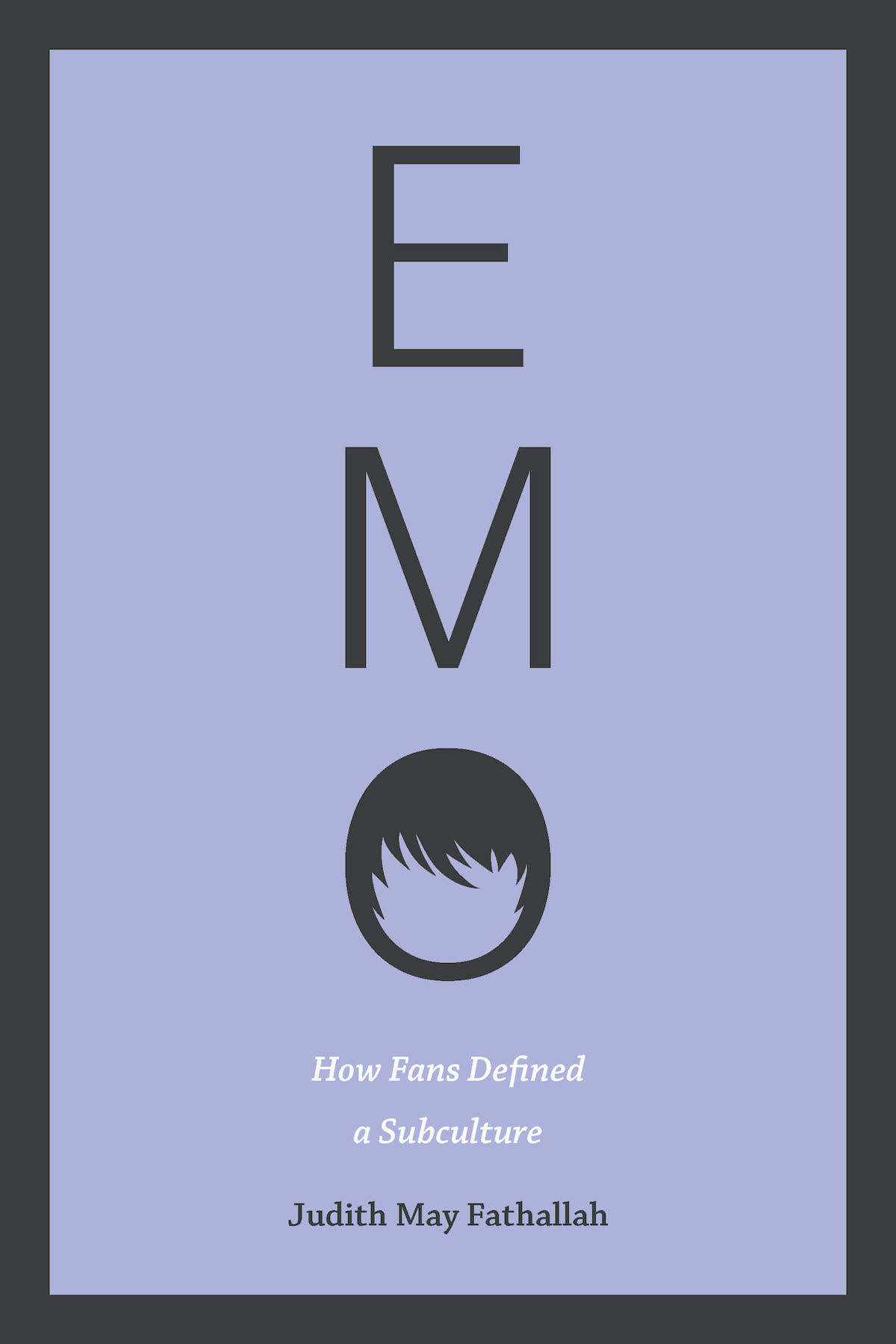 Emo: How Fans Defined a Subculture
Emo: How Fans Defined a Subculture
By Judith May Fathallah
THE EDITED PRESS RELEASE: “For many, the word emo calls to mind angsty teenagers, shaggy black haircuts, and skinny jeans. A popular music phenomenon in the early 2000s, emo is short for emotional hardcore and refers to both a music genre and a youth scene notable for its androgynous style. Judith May Fathallah pushes beyond the stereotypes and social stigma to explore how online fandom has shaped the definition of emo, with significant implications both for millennial constructs of gender and for contemporary fan studies. First laying out the debate over what emo is, Fathallah walks superfans and newcomers through the culture surrounding the genre’s major bands, including the emo holy trinity: My Chemical Romance, Fall Out Boy and Panic! At the Disco. Next she examines fans’ main mode of participation in the emo subculture — online communities such as LiveJournal, Tumblr, MySpace and band websites. Taking a hard look at the gender politics that dominated those spaces, she unearths a subculture that simultaneously defines itself by its sensitivity and resistance to traditional forms of masculinity, yet ruthlessly enforces homophobic and sexist standards. Fathallah demonstrates fandom’s key role in defining emo as a concept and genre after 2001, with probing insight into its implications for gender constructions through popular music.”









